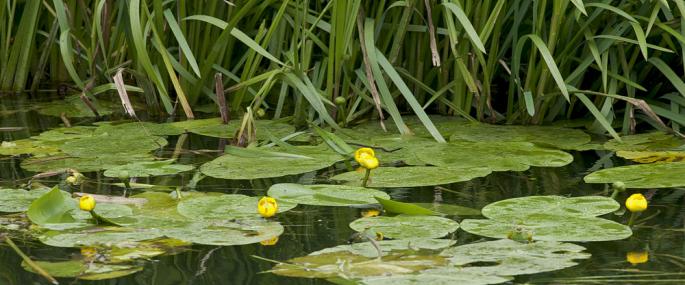The Yellow Water-lily is a common plant of still or slow-moving water and grows in ponds, lakes, canals and ditches. It has large 'lily pad' leaves, up to 40cm across, and grows in water up to 3 metres deep, with the leaves floating on the surface. It flowers during the summer from June to September, and smells like the dregs of wine, hence other common names like 'Brandy Bottle'.
Human activity, including the drainage of land for agriculture and the loss of ponds through development, has resulted in the disappearance of many of the UK's wetlands. The Wildlife Trusts are working closely with planners, developers and farmers to ensure our wetlands are protected. You can help too: plant water-lilies and other natives in a wildlife-friendly pond and provide shelter for frogs and nectar for insects. In partnership with the RHS, The Wildlife Trusts' Wild About Gardens initiative can help you plan your wildlife garden.
